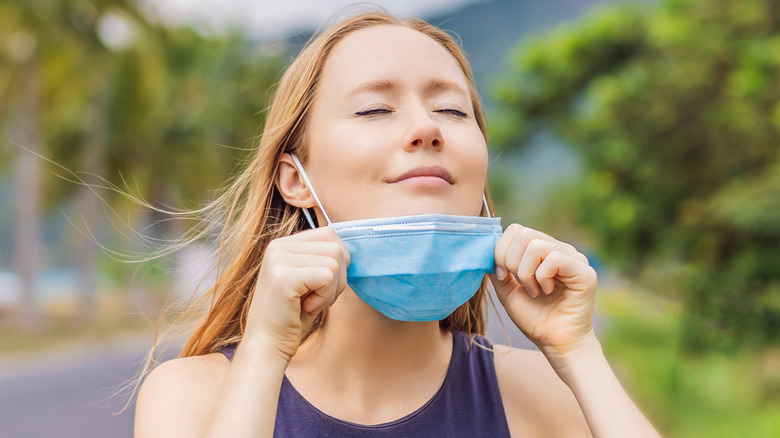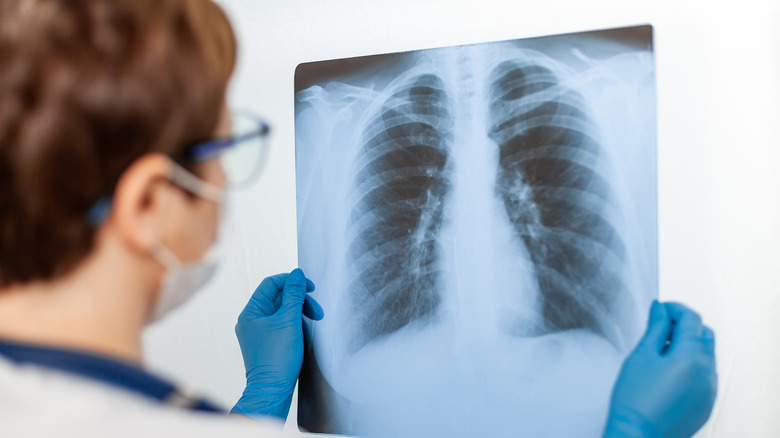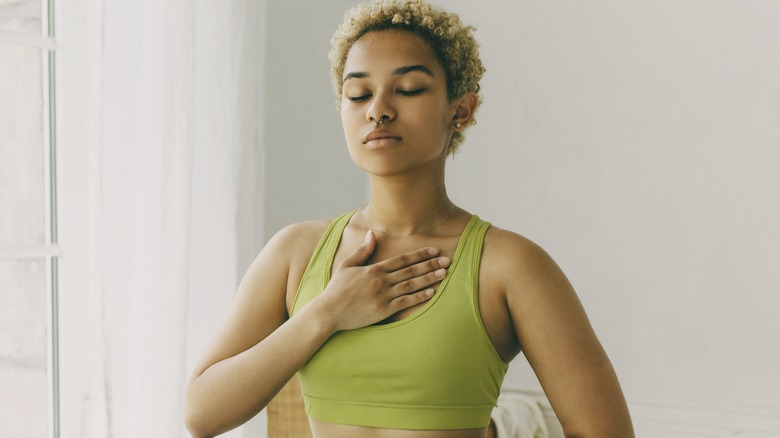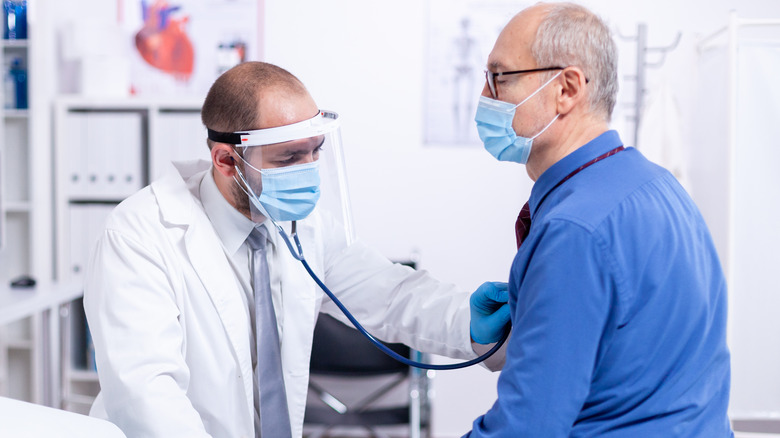Respiratory Therapist Shares How To Heal Your Lungs With Breathwork After COVID-19
At the height of the COVID-19 pandemic, healthcare workers were among those on the front lines providing critical care to COVID-19 patients. With shortness of breath and breathing difficulty having been among some of the more common symptoms of infection (via U.S. Centers for Disease Control and Prevention), respiratory therapists, in particular, have been essential when it comes to patient care. "During the COVID-19 pandemic, respiratory therapists played a crucial role in caring for those infected with the virus," Mandy DeVries, M.S.-RCL/Ed, RRT, RRT-NPS, Director of Education at the American Association for Respiratory Care (AARC), tells Health Digest in an exclusive interview.
"Respiratory therapists are health care professionals that assess and treat patients with lung and breathing difficulties," she explains. "They are responsible for managing mechanical ventilators and other respiratory support for COVID-19 patients. They also assist with oxygen therapy and administering medicine to improve lung function." Despite various challenges, such as high rates of burnout and low stock of personal protective equipment (PPE), DeVries shares that respiratory therapists are dedicated healthcare professionals committed to providing life-saving support for COVID-19 patients.
Signs that one's lungs have been affected by COVID-19
With specialty knowledge of the ways in which COVID-19 can impact the lungs, DeVries explains that respiratory therapists are often among the first to detect symptoms of infection in patients. "Common signs [respiratory therapists] look for include shortness of breath, a persistent cough, and an increased need for oxygen," she states. "Respiratory therapists also closely monitor lung function, as COVID-19 often causes fluid buildup that can decrease lung capacity and lead to difficulty breathing."
DeVries goes on to tell Health Digest that the severity of symptoms can range from mild to severe, with some cases requiring hospitalization or breathing support through a ventilator. "If you or someone you know is struggling to breathe due to COVID-19, it is important to seek medical help," DeVries urges. "Therapies like pulmonary rehabilitation can aid in restoring lung health and improving quality of life. Don't struggle with respiratory issues alone — seek a respiratory therapist to help heal your lungs and improve your breathing."
How breathing exercises can help the lungs heal
In addition to seeking medical treatment, DeVries encourages individuals to utilize breathing exercises in their day-to-day recovery process to help heal and build up lung strength post-COVID-19 infection. "By practicing deep breaths and controlled exhales, you can increase lung capacity and reduce strain on the muscles responsible for breathing," DeVries explains. "In fact, some breathing exercises have even improved overall lung function in those with chronic lung conditions like asthma and COPD."
Experts at Healthline explain that certain breathing techniques cater specifically to increasing lung capacity. One such exercise is deep belly breathing, or diaphragmatic breathing, in which an individual inhales oxygen down into their abdomen, resulting in more stomach movement than chest movement. Another tactic is pursed lip breathing, which involves slowly exhaling through the mouth with your lips protruding as if about to give a kiss.
How long the recovery period is
"When it comes to recovery time for COVID-19, every case is different," DeVries states. She explains that the speed of recovery can depend on numerous factors including one's health status, age, and the presence of any underlying health conditions. "Respiratory therapists have seen some patients recover within weeks, while others may take months or even longer to fully heal," DeVries tells Health Digest. "In severe cases, patients with long-term complications can even require ongoing treatment and rehabilitation."
DeVries goes on to note that some patients may continue to experience prolonged COVID-19 symptoms such as fatigue or shortness of breath after recovery. For this reason, DeVries encourages people to take precautionary measures to help lower their risk for infection. "The best way to protect ourselves and those around us is by following social distancing guidelines and wearing masks in public," she shares. Additionally, DeVries states that taking steps to keep our bodies healthy is another important way to safeguard against severe cases of infection. "Taking care of our health through exercise and a balanced diet can also strengthen our immune system to combat the virus," she concludes.




